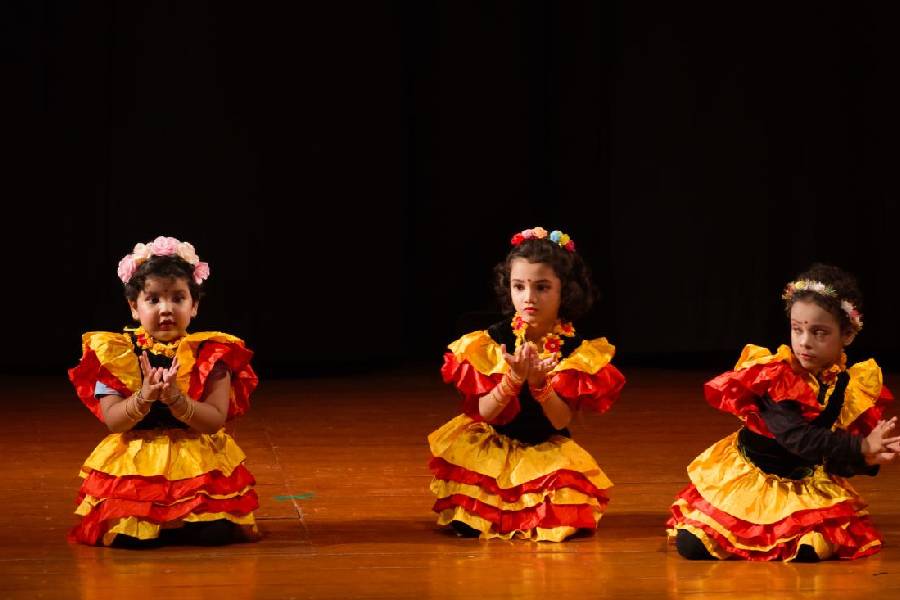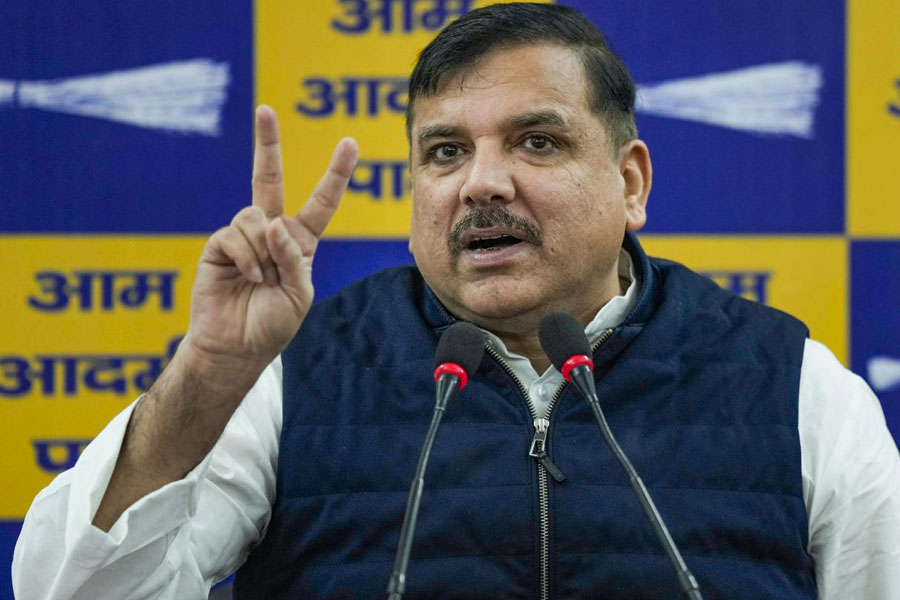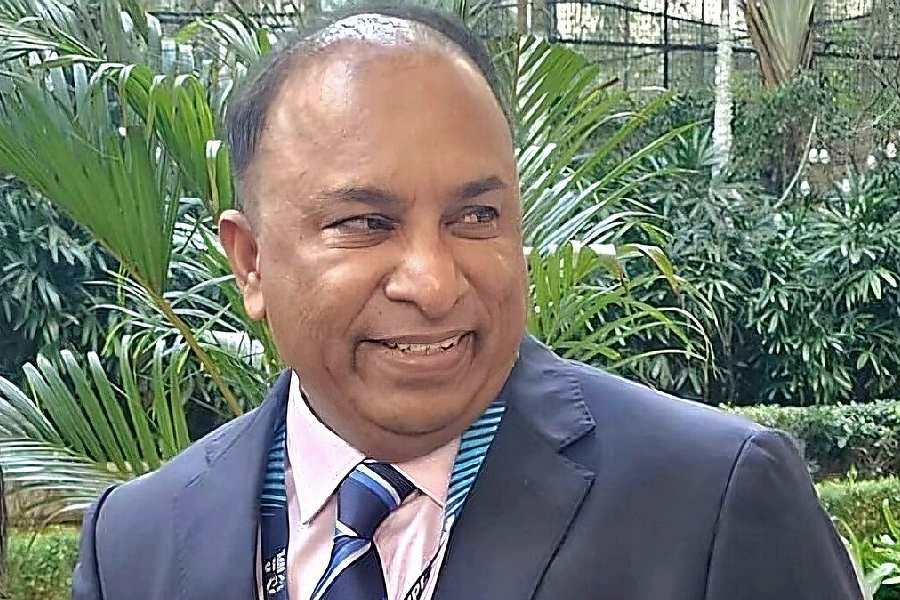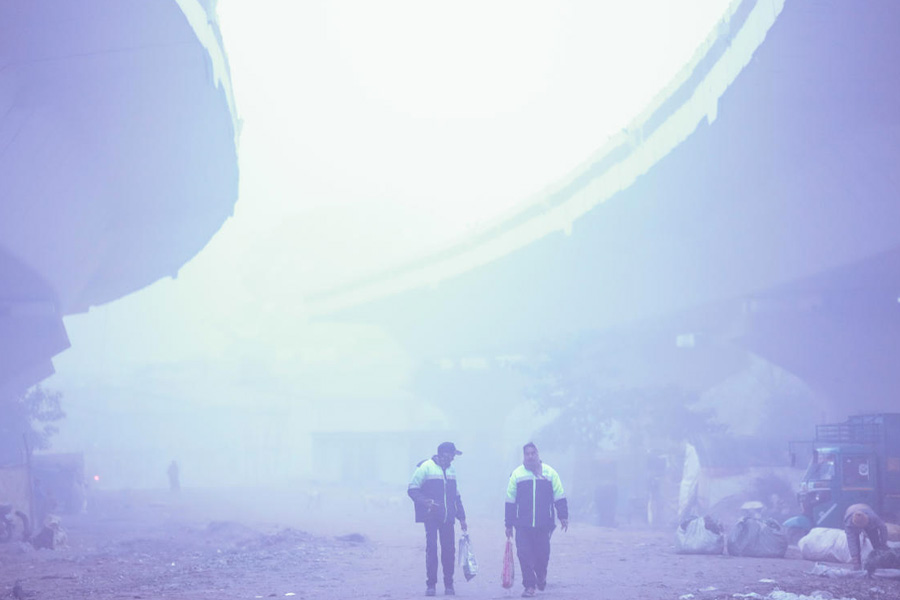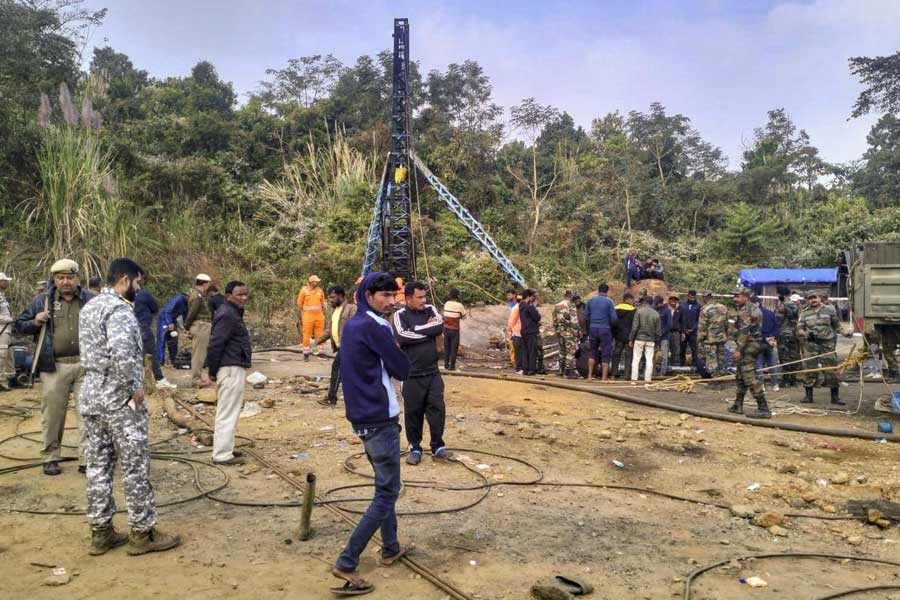The stage was set, the lights were aglow, and the air was full of excitement as the annual day of Shuvan Sarada unfolded at Rabindra Tirtha. Students of the FE Block cultural institute showcased an array of dances, songs, and drama.
The performance by the tots was met with applause and cheers, and those yet to hit the stage were being guiding by their teachers to stay composed and attentive. The event was conceptualised by Sumita Ghosh, who is also the founder of the institute.
“I began this school in 1984 to promote Indian culture through traditional art forms,” said Ghosh. “I appreciate both eastern and western forms of art and try to incorporate art from different regions.” She expressed concern for today’s generation, noting that they often did not take art seriously. At Shuvan Sarda, she said, students view art as a form of relaxation rather than a burden.
In the meantime, the auditorium was filled with the melodious voices of the participants who performed various forms of Indian music. “I love wearing makeup, and Odissi gives me the perfect chance for it,” said Aindrilla Mallick of Class X. “I am not afraid of stage performances at all. I have loved performing since childhood,” added Vasundhara Biswas of Class VII.
Despite being in Class X, Renisa Mullick said she tried to balance her passion with academics. Sangita Mondal didn’t get a chance to learn dancing while growing up, “so I enrolled here with my daughter to learn with her and give her company,” she said.
Anushree Banerjee, a classical music teacher at the centre, said they provide an excellent environment for teaching and learning music. “Bharatnatyam highlights the divine nature of dance, which demands years of training and dedication to truly honour its grace,” said Paulami Sen, a Bharatnatyam teacher. She also emphasised the importance of having a hassle-free environment rather than forcing students to learn something.
Meanwhile, on stage, the performances continued under the guidance of Sanjoy Roy to the song Barso re megha megha. This was followed by a series of folk dances of various Indian states, showcasing unity in diversity.
“Sometimes we may be unaware of the cultures of other Indian states, but shows like these allow us to learn about them,” said Swapna Gangopadhyay, an Indian settled in the US, who was in the audience. “Living outside India, we often feel disconnected from our roots and feel the need to pass our culture on to the next generation. Events like these help us achieve that goal.”
Srijita Tripathi
Tots to senior citizens captured hearts with their performances for Karunamoyee-based cultural group, Samanwoy Samitee, at Rabindra Okakura Bhavan. The group runs a YouTube show for artistes called Sanibarer Saandhyo Asor, that has gained popularity not just in Salt Lake but across Bengal and even Tripura and Bangladesh. This was the show’s first anniversary.
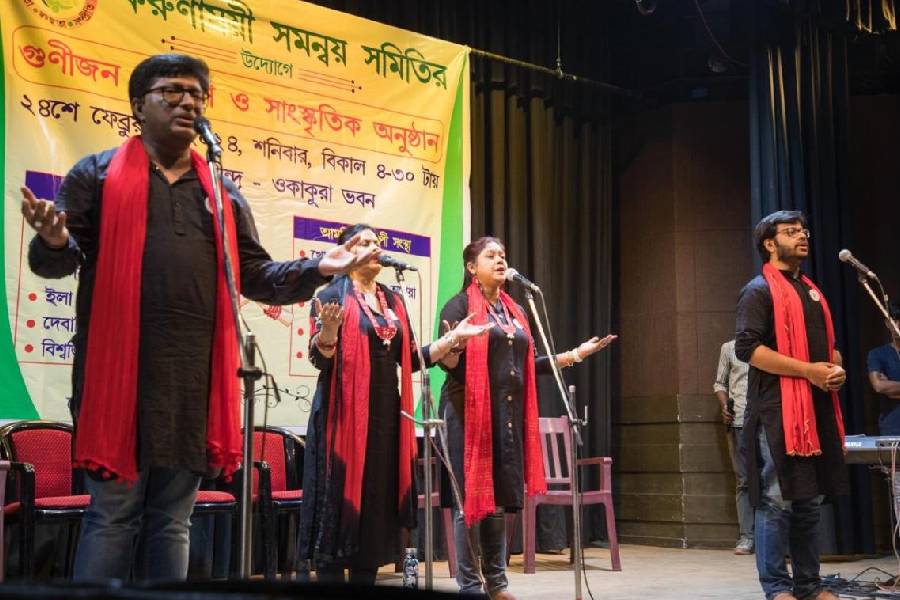
A group recitation event for Samanwoy Samitee at Rabindra Okakura Bhavan.
Those performing on stage had done so online earlier. The show began with a rendition of Tagore’s Madhuro dhwani baaje by Nilabjwa Chatterjee, followed by dance and recitation. Four-year-old Ritaja Chatterjee confidently recited Tagore’s poem Taalgachh without a pause, that too impromptu.
“This child had come to watch the show with her grandmother and mother Nilabjwa, but seeing her zeal, we announced her name as a performer,” smiled Amiya Chakraborty, a member of the group.
Nonagenarian Anindya Sen, of Karunamoyee, recited Tagore’s lengthy poem Duhsomoy and received a standing ovation from the audience.
Chairman Sudip Dhar highlighted the group’s successes over the last year, including the launch of a web magazine. He lauded Chakraborty for managing the online show. “Many were apprehensive about its success initially, but the show gradually gained momentum,” Chakraborty said.
Dhar and secretary Ranjan Poddar then felicitated special guests like Debashis Sengupta and Biswajit Panda, who contributed in various ways throughout the year. Indira Bandyopadhyay, a life member of the Samitee known for her expertise in music and dance and for her association with Akashvani Calcutta, was felicitated for nurturing local talent.
Also honoured were writer Chiranjib Halder for his contributions to their magazine and Innas Uddin, who writes a popular column titled Krishnanagarer Kazi, about little-known aspects of Kazi Nazrul Islam’s life. “The rebel poet never had a permanent address and changed homes more than 35 times in his life. But he spent three years from 1926, at Grace Cottage of Krishnanagar and I have taken up the challenge of highlighting that phase through my writings,” explained Innas Uddin.
Elderly elocutionist Ila Roy recited a poem and then it was over to several Karunamoyee-based cultural groups. Khoai, led by Amiya Chakraborty, presented a dance drama based on Tagore’s poem Pratham Puja. Natun Dishari presented a poetry collage to mark International Mother Language Day, directed by Partha Pratim Seal.
Rupkatha Kabitay Opera presented a poetry collage in opera style. "We are trying to present Bengali poems in European opera style. We have already performed in over 100 shows in a year so people are embracing this new style,” said group leader Subhomoy Mukhopadhyay.
There was a dance recital titled Amar mukti aloy aloy by Geetam as well as dance by AB Block-based Ta Thoi and audio drama by their senior citizens’ wing Bikele Bhorer Phool.
Bharati Kanjilal

